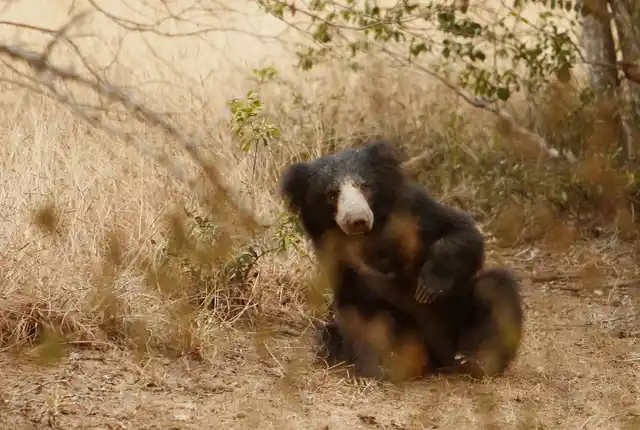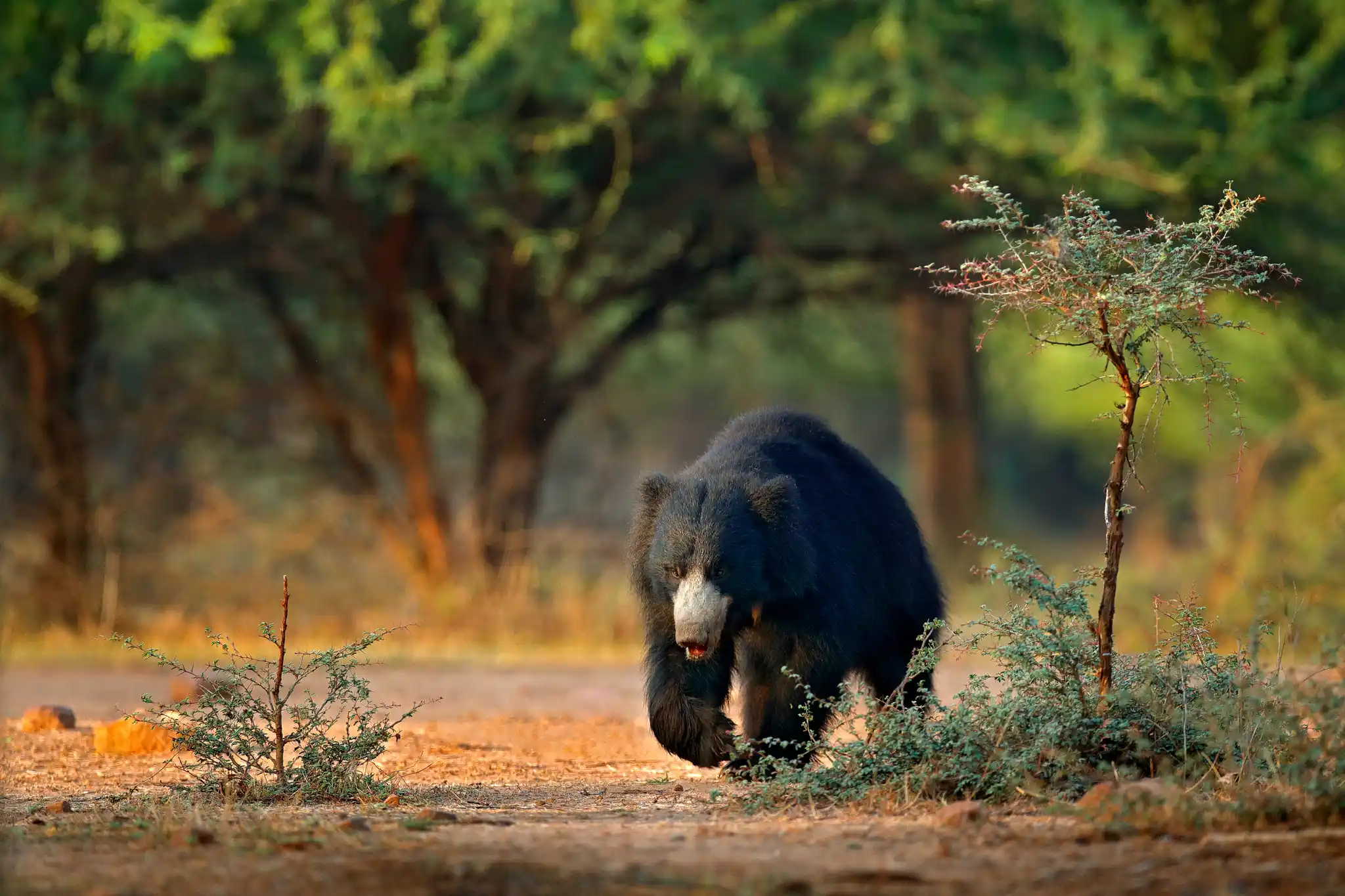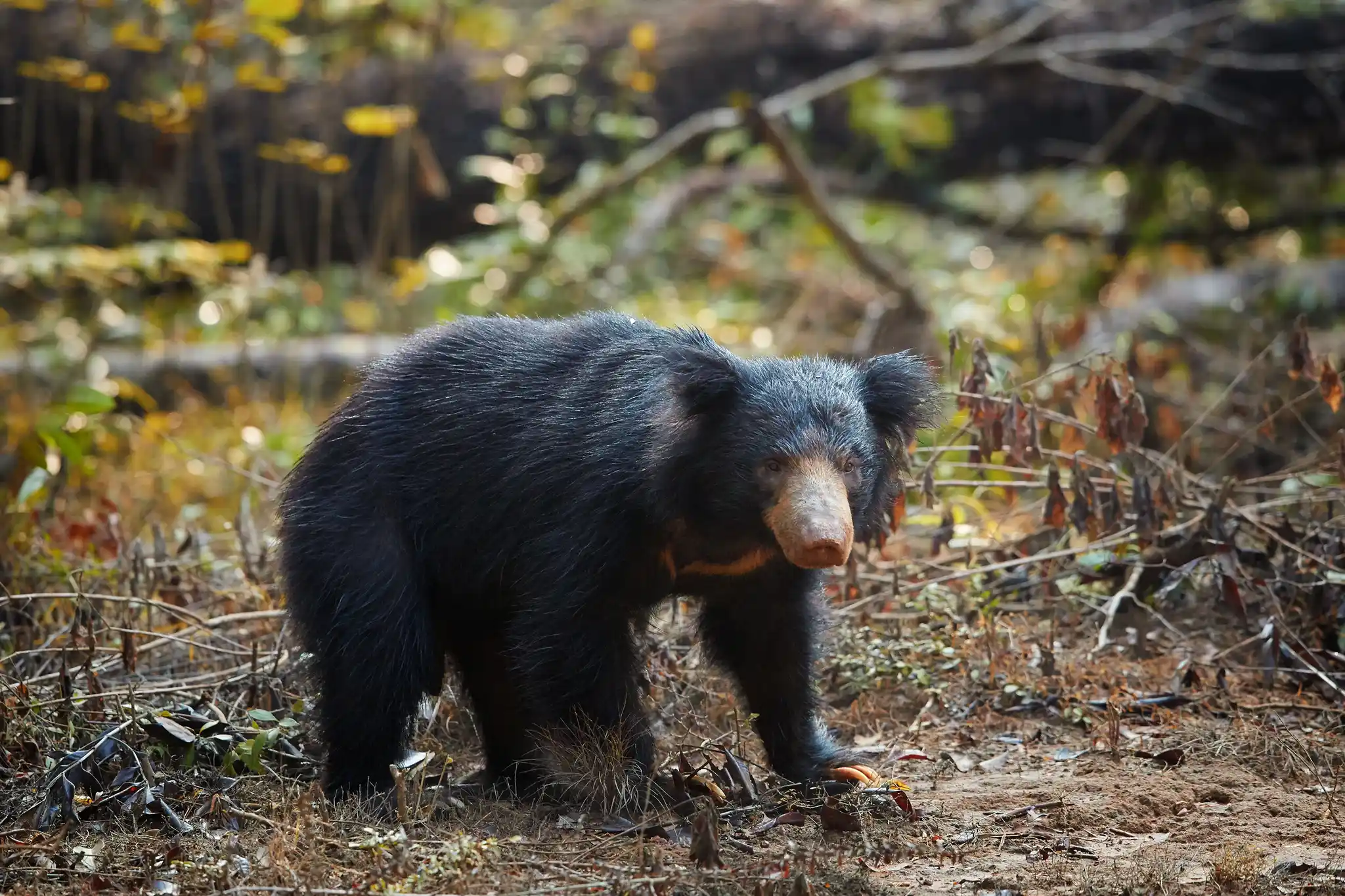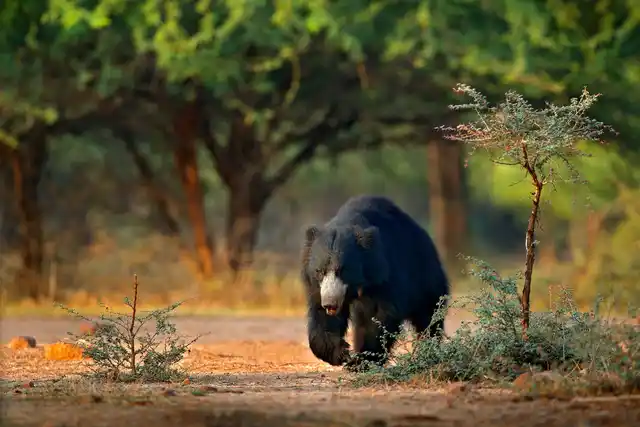Menu
Sloth Bear
Wildlife
Encounters with Sloth Bears
From the forests of India to the jungles of Sri Lanka, sloth bears (Melursus ursinus) are among the most fascinating and distinctive bear species in the world. Known for their shaggy black coats, long curved claws, and pale, cream-coloured snouts, they are perfectly adapted for a life of foraging and climbing in tropical habitats. Despite their name, sloth bears are far from slow, they are agile, noisy, and surprisingly fast when threatened.
Before Natural World Safaris, the brand was divided into three specialist companies, including World Bear Safaris. We’ve retained all of that expert knowledge, crafting journeys that bring you closer to the world’s rarest bears, including the elusive sloth bear, found only in South Asia. Today, seeing a sloth bear in the wild is a rare and rewarding experience, offering a glimpse into one of Asia’s most secretive and endangered bear species.

Unlike their northern cousins, sloth bears feed primarily on insects. They use their powerful claws to rip open termite mounds and ant colonies, then suck up the insects with a loud, vacuum-like snort that can be heard from over 100 metres away. They are also known to climb trees to feed on honeycombs, mangoes, and figs — a behaviour that gives them an oddly endearing quality.
Sloth bears are typically nocturnal and solitary, emerging at dusk to forage across the dry forests and grasslands of India and Sri Lanka. Mothers are famously protective and often carry their cubs on their backs — a behaviour unique among bears.
Despite their resilience, sloth bears are listed as Vulnerable by the IUCN, facing threats from habitat loss, poaching, and human-wildlife conflict. Conservation efforts in India’s protected reserves are helping safeguard this remarkable species, allowing travellers rare and ethical opportunities to see them in the wild.

The Best Time to See Sloth Bears
The best time to see sloth bears depends on the region, but sightings are most reliable between February and June, during the dry season when water is scarce and animals gather around shrinking waterholes.
In India’s Satpura National Park, bears can often be seen foraging in the early morning or late afternoon light, while in Ranthambore and Kanha, sightings peak as fruiting trees attract hungry bears out of the forest.
The monsoon months (July to September) make travel more difficult, though lush post-monsoon landscapes (October–January) can also offer magical photography conditions, with a chance to see mothers and cubs exploring after the rains.
The Best Places to See Sloth Bears
India remains the best destination for encountering sloth bears in the wild, with several national parks offering excellent chances of sightings:
1.Satpura National Park, Madhya Pradesh
A quiet, lesser-visited park ideal for walking safaris, Satpura is renowned as one of the best places in India to see sloth bears. The dry, rocky terrain provides ideal conditions for spotting them as they forage in open areas.
2. Kanha National Park, Madhya Pradesh
Known as the inspiration for The Jungle Book, Kanha offers classic Indian safari landscapes and strong chances of seeing sloth bears alongside tigers, leopards, and wild dogs.
3. Ranthambore National Park, Rajasthan
While best known for its tigers, Ranthambore’s rocky hillsides and fruiting trees also attract sloth bears, particularly in the early summer months.
4. Yala National Park, Sri Lanka
Sri Lanka’s dry-zone jungles provide another excellent opportunity to encounter sloth bears, especially in Yala and Wilpattu National Parks, where they share territory with leopards and elephants.

Best Time to See Sloth Bears: Month-by-Month
A good month to visit for sloth bear sightings, especially in central India’s national parks. Cooler weather keeps the forests dry, and bears are often seen foraging in open clearings during daylight hours.
Excellent time for sightings as bears become more active in search of insects and fruit. Waterholes begin to dry, drawing wildlife closer together, ideal for photography.
Prime viewing season across Satpura, Kanha, and Ranthambore. The warm, dry weather makes sloth bears easier to spot as they venture into open areas and feed on fallen fruit.
One of the best months to see sloth bears in India. The heat concentrates animal activity near rivers and waterholes, offering excellent early morning and late afternoon encounters.
Still an excellent time for sightings before the onset of the monsoon. In Sri Lanka, particularly in Yala National Park, bears are often seen feeding on palu fruit.
The last good month before the monsoon rains. In India, sightings remain reliable in dry forest regions like Satpura and Tadoba. Temperatures can be high but wildlife activity peaks around water sources.
Not an ideal time for sloth bear safaris. The monsoon rains begin, making park access difficult and causing wildlife to disperse into dense forest cover.
Still not a good month for sightings. Many national parks experience heavy rains and temporary closures, though landscapes become lush and green.
As the rains ease, early post-monsoon sightings are possible in some parks. Bears begin to re-emerge as forest vegetation thickens with new growth.
A good time to return for safaris, especially in Ranthambore and Wilpattu. Freshly revived forests provide a beautiful setting, though bears can be more elusive.
A great transitional month, moderate temperatures, lush scenery, and good chances of seeing mothers with cubs after the rains.
A rewarding time for peaceful safaris with cooler conditions and fewer visitors. Sloth bears can occasionally be seen feeding in open meadows and termite-rich patches.
